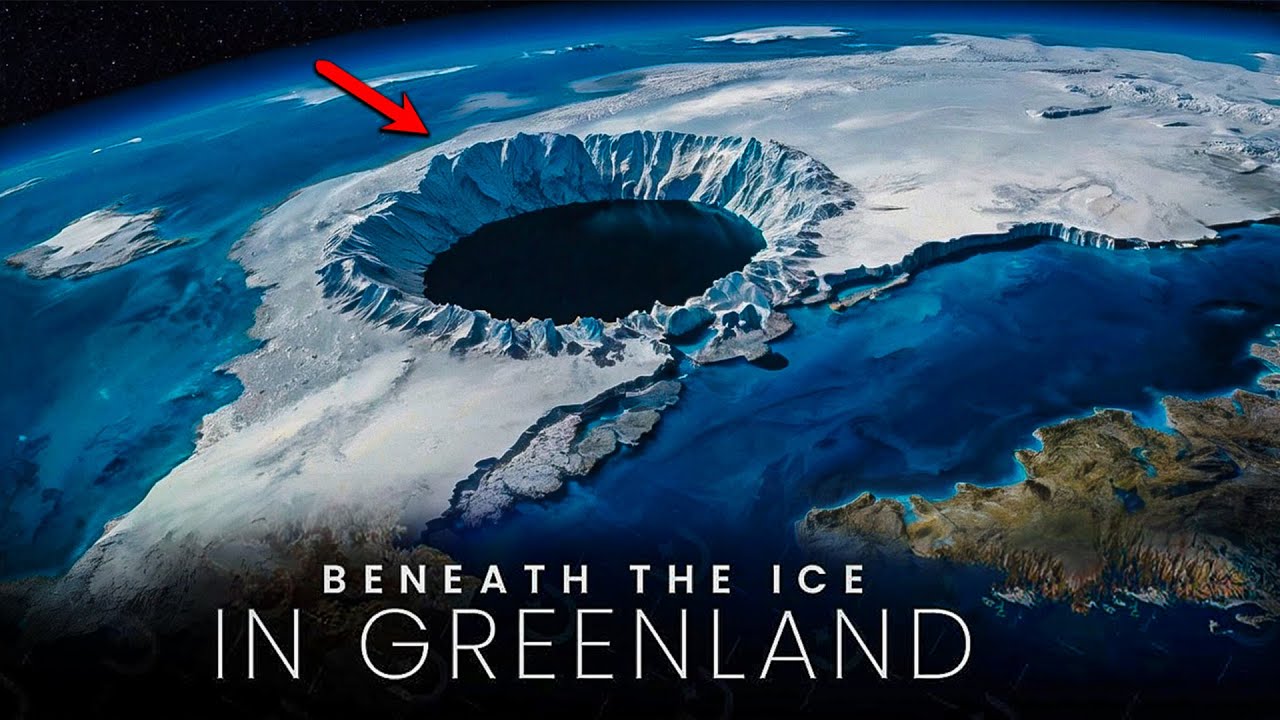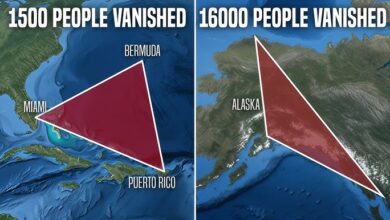Scientists Stunned To Discover What’s Hidden Under The Ice In Greenland

### Shocking Discoveries Under Greenland’s Ice
In a surprising discovery, scientists have found fossilized plants buried deep under nearly a mile of ice in Greenland. For thousands of years, the icy land has kept its secrets hidden, but now, as the ice melts, the secrets hidden beneath are slowly being revealed.
**The Changing Greenland Ice Sheet**
Greenland was once a land of annual snowfall, accumulating a thick layer of ice over millennia. However, history shows that the ice sheet has expanded and shrunk at least 11 times, with the most significant change occurring a million years ago. More recently, studies since the early 2000s have shown that Greenland’s glaciers are retreating rapidly, and this is not due to temperature changes alone. A new phenomenon, called the **Jakobshavn effect**, has been discovered: as the glacier thins, friction decreases, causing its movement speed to increase significantly.
**The impact of warm sea water**
Since the 1950s, the sea water in the North Atlantic has warmed significantly, melting the base of the glaciers. In particular, in 1997, ocean currents changed, bringing warm water from the Irminger Sea close to the glaciers in western Greenland, accelerating the melting process. Whereas previously, snowfall compensated for ice loss, since the 1980s, the Greenland ice sheet has lost more ice than it has formed. Notably, since 2010, the melting rate has reached levels not seen in the past 12,000 years.
**Rain in Greenland – an unusual sign**
In 2021, an unprecedented phenomenon occurred: heavy rain fell on Greenland, and scientists did not even have instruments to measure rainfall because they did not expect this event. As Greenland’s ice melts, global sea levels rise. In the period 2012-2017 alone, the melting ice caused sea levels to rise by 0.68 mm per year. If this trend continues, by the end of this century, sea levels could rise by 6 to 13 cm, or in the worst case scenario, 33 cm.
**Danger to ocean currents**
In addition to raising sea levels, meltwater from Greenland can also weaken ocean currents in the Atlantic. Large amounts of fresh water can slow or even collapse ocean currents, seriously affecting the global climate.
**Unexpected discovery: Mysterious city under the ice**
In April 2024, while flying over Greenland to collect radar data, NASA accidentally discovered a strange structure buried under the ice. It turned out to be **Camp Century**, a secret US military base built in 1959 during the Cold War. The base consists of interconnected tunnels and has been abandoned since 1967.
Thanks to the advanced radar system, researchers were able to observe the details of the base’s structures, which had previously only appeared faintly on old radar images. This discovery not only helps us better understand Greenland’s history but also provides important data for studying changes in the ice sheet.
**Discovery of plant fossils under Greenland ice**
In 2021, scientists found plant fossils nearly a million years old under a layer of ice more than 1.6 km thick. This suggests that Greenland was ice-free at some point in the past, even when atmospheric CO2 levels were lower than they are today. The discovery raises an important question: if Greenland has melted in the past, what will happen as global temperatures continue to rise due to human activity?
**Other discoveries under Greenland’s ice**
In addition to Camp Century and plant fossils, Greenland is home to many other strange things:
– **Giant ice structures**: Radar has detected ice structures shaped like “jelly rolls” that are taller than Manhattan skyscrapers.
– **Meteor impact craters**: In 2015, scientists discovered a 19-mile-wide (about 31 km) impact crater under the ice in northwest Greenland. The crater is about 300 m deep and may have been formed by a giant meteorite hitting Earth.
**The Future of Greenland and Climate Change**
The findings from Greenland provide important clues about the impact of climate change. If Greenland has lost ice in the past due to natural climate change, scientists say, then current human-caused warming could accelerate the process even further.
Paul Bierman, a researcher at the University of Vermont, warns: _“This is not a problem for the next 20 generations. This is a problem for the next 50 years.”_ If Greenland continues to melt, coastal cities like New York, Miami and Dhaka could be submerged.
What other mysteries does Greenland hold? What more will further research reveal about Earth’s past and future?








